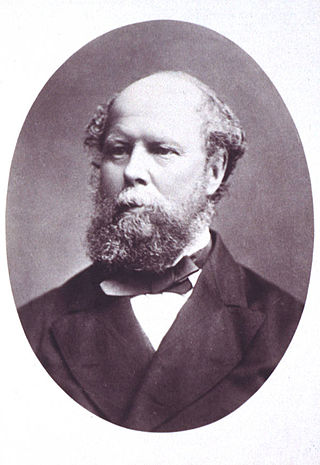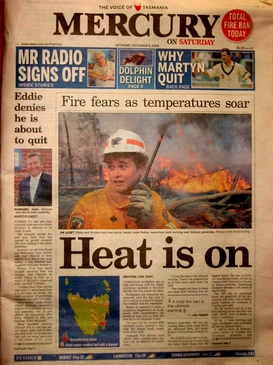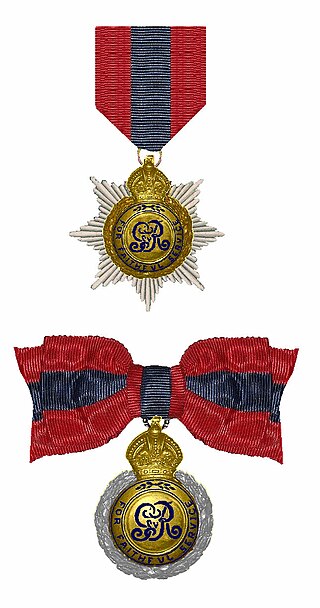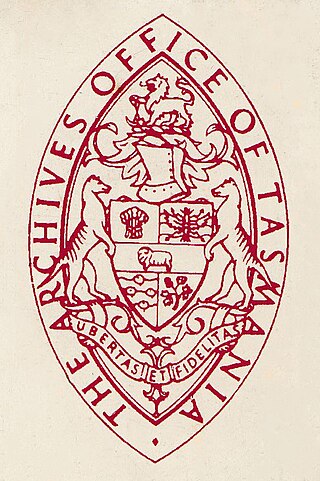
Truganini, also known as Lallah Rookh was an Aboriginal Tasmanian woman. She was one of the last native speakers of the Tasmanian languages and although NOT the last living full-blooded tasmanian aboriginal she is one of the last individuals solely of Aboriginal Tasmanian descent.

William Lodewyk Crowther FRCS was a Tasmanian politician, who was Premier of Tasmania from 20 December 1878 to 29 October 1879.

The Clipper was a weekly labor-orientated newspaper published in Hobart, Tasmania, from 8 April 1893 until 25 December 1909, before its merger with the Daily Post in 1910.

TheMercury is a daily newspaper, published in Hobart, Tasmania, Australia, by Davies Brothers Pty Ltd, a subsidiary of News Corp Australia, itself a subsidiary of News Corp. The weekend issues of the paper are called Mercury on Saturday and Sunday Tasmanian. The current editor of TheMercury is Craig Herbert.

Sir Francis Villeneuve Smith was an Australian lawyer, judge and politician, who served as the fourth Premier of Tasmania from 12 May 1857 until 1 November 1860.

The State Library of Tasmania is the reference, special collections, research and public lending library in the Tasmanian capital of Hobart, Australia. It is part of Libraries Tasmania. Libraries Tasmania includes a state-wide network of library services, community learning, adult literacy and the State’s archives and heritage services.

Kingston Beach is a residential locality in the local government area (LGA) of Kingborough in the Hobart LGA region of Tasmania. The locality is about 2 kilometres (1.2 mi) south-east of the town of Kingston. The 2021 census recorded a population of 2305 for the state suburb of Kingston Beach.
Jewelled Nights is a 1925 Australian silent film directed by the film star Louise Lovely in collaboration with her husband Wilton Welch. Only part of the film survives today.

Libraries Tasmania, formerly LINC Tasmania, is the Tasmanian state government-run organisation that operates libraries in Tasmania, including the state's reference library, a network of public lending libraries, archives, heritage, adult education, and adult literacy services. Earlier predecessors of the network were HuonLINC and the Community Knowledge Network.

Holyman House is an iconic Art Deco building in the central business district of Launceston, Tasmania, Australia.

Franklin Square is a 1.6-acre (0.63-hectare) oak-lined public square located in the Hobart City Centre in Tasmania, Australia. It is named for Sir John Franklin, an Arctic explorer and former Lieutenant-Governor of Van Diemen's Land. The centrepiece of the park is a statue of Franklin, with an epitaph written by Alfred, Lord Tennyson. As the city's most central urban parkland and transportation hub, Franklin Square is frequently utilised for festive markets, public gatherings and as a place for public protest.

Henry Hunter (1832–1892) was a prominent architect and civil servant in Tasmania and Queensland, Australia. He is best known for his work on churches. During his life was also at various times a state magistrate of Tasmania, a member of the Tasmanian State Board of Education, the Hobart Board of Health, a Commissioner for the New Norfolk Insane Asylum and President of the Queensland Institute of Architects.
The Tasmanian Heritage Register is the statutory heritage register of the Australian state of Tasmania. It is defined as a list of areas currently identified as having historic cultural heritage importance to Tasmania as a whole. The Register is kept by the Tasmanian Heritage Council within the meaning of the Tasmanian Historic Cultural Heritage Act 1995. It encompasses in addition the Heritage Register of the Tasmanian branch of the National Trust of Australia, which was merged into the Tasmanian Heritage Register. The enforcement of the heritage's requirements is managed by Heritage Tasmania.

Isle of the Dead is an island, about 1 hectare in area, adjacent to Port Arthur, Tasmania, Australia. It is historically significant since it retains an Aboriginal coastal shell midden, one of the first recorded sea-level benchmarks, and one of the few preserved Australian convict-period burial grounds. The Isle of the Dead occupies part of the Port Arthur Historic Site, is part of Australian Convict Sites and is listed as a World Heritage Property because it represents convictism in the era of British colonisation.

William Nevin Tatlow Hurst, ISO was a senior Tasmanian civil servant. In 1925 he succeeded the Tasmanian Surveyor-General, E A Counsel, as the head of the Tasmanian Department of Lands and Surveys, although with the title of Secretary for Lands.

The Independent was a weekly English language newspaper published in Launceston, Tasmania from 1831 to 1835.

Mary Morton Allport was an English Australian artist who is thought to be Australia's first professional female artist, lithographer, etcher and engraver. Allport painted landscapes and portrait miniatures.
Lake Flannigan is a natural freshwater lake on King Island, Tasmania, Australia, situated four kilometres south of the Cape Wickham Lighthouse, in the northern locality of Wickham.

The Archives Office of Tasmania (AOT), 1965-Ongoing is the Tasmanian government agency responsible for the archival records of the State of Tasmania. The Archives Act 1965 established the Archives Office of Tasmania as an independent entity, but it remained within the then Tasmanian State Library Department.

Amelia Lucy Wayn MBE was an Australian historical researcher who was employed in Tasmania long before the Tasmanian Archive and Heritage Office was established.
















